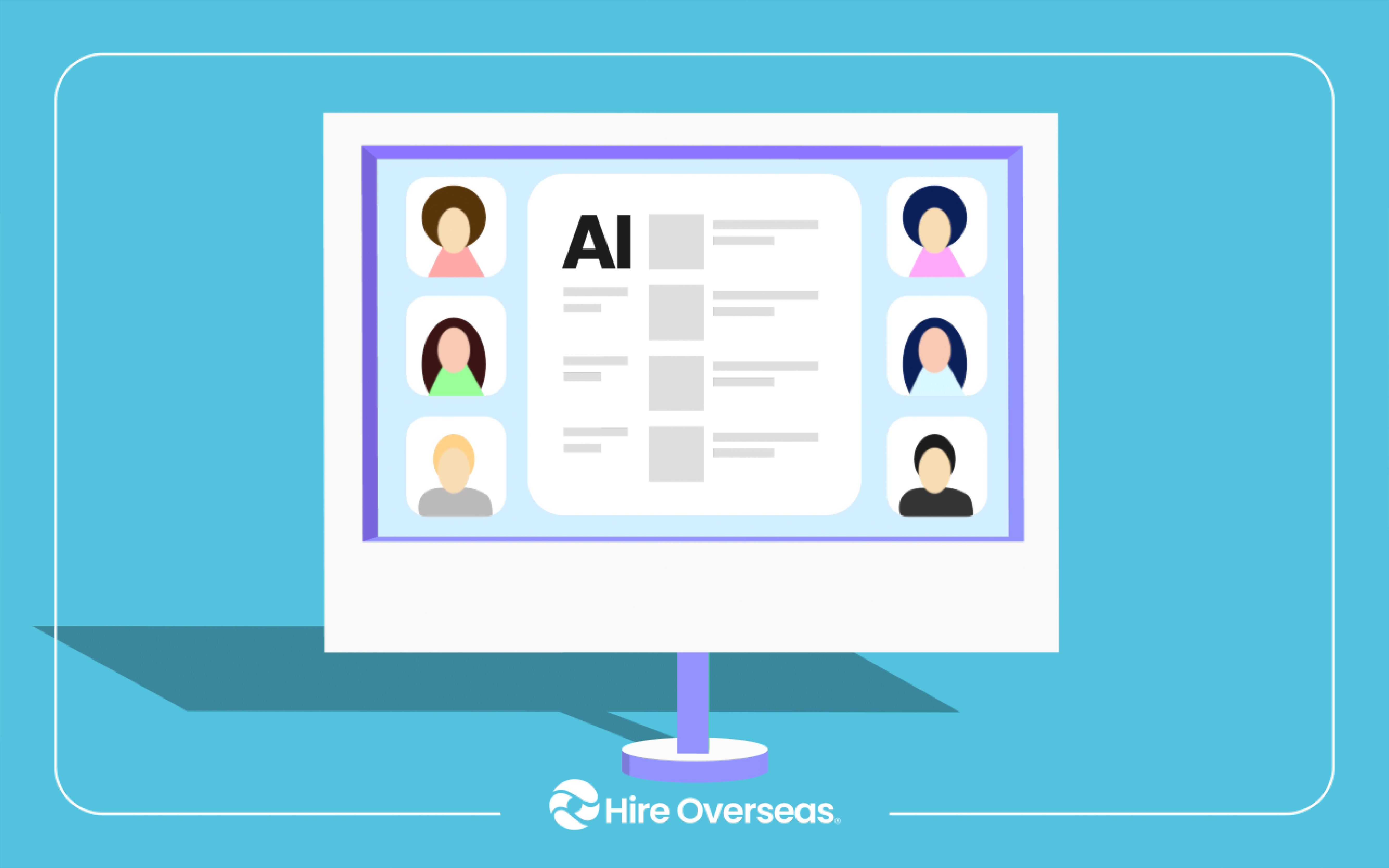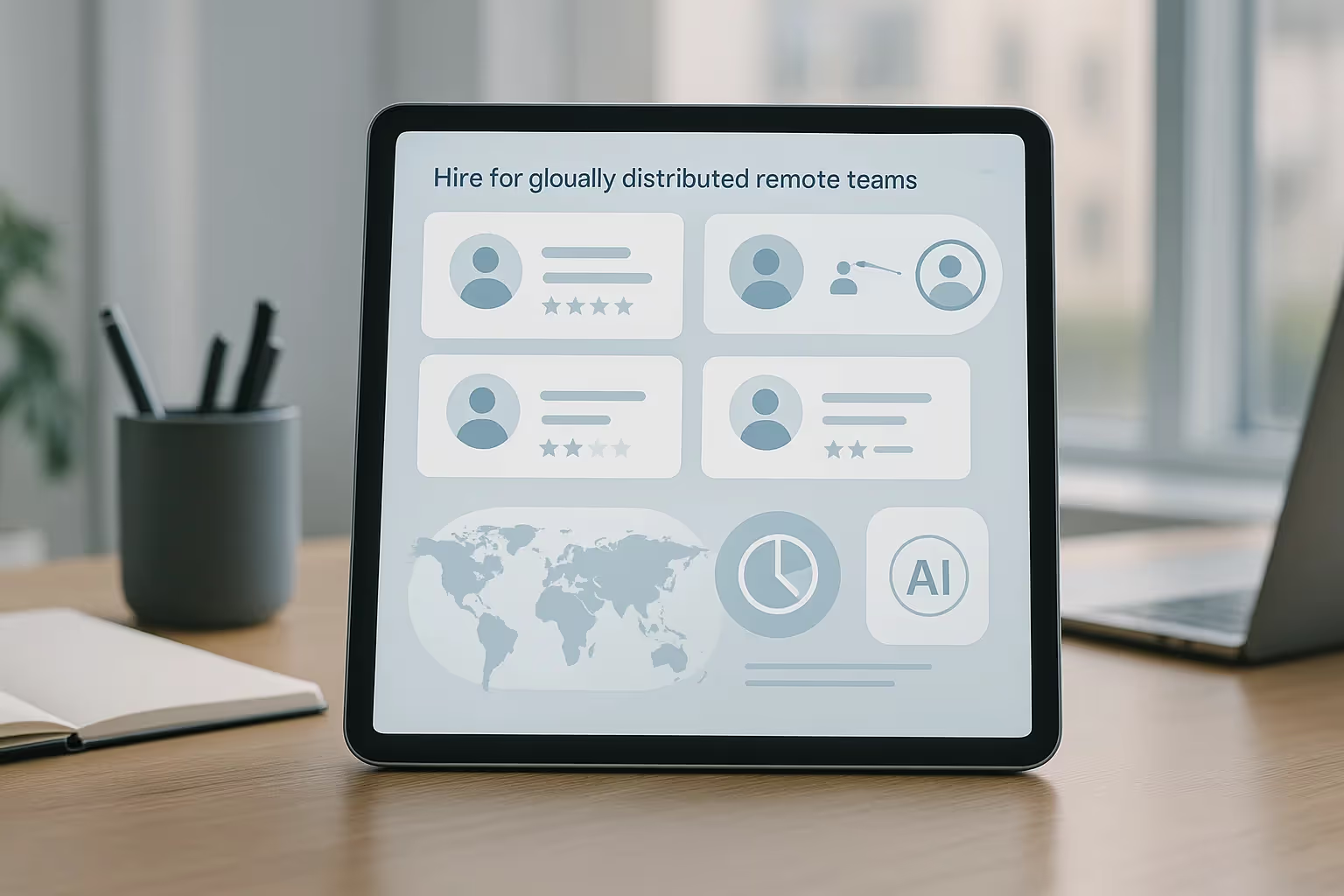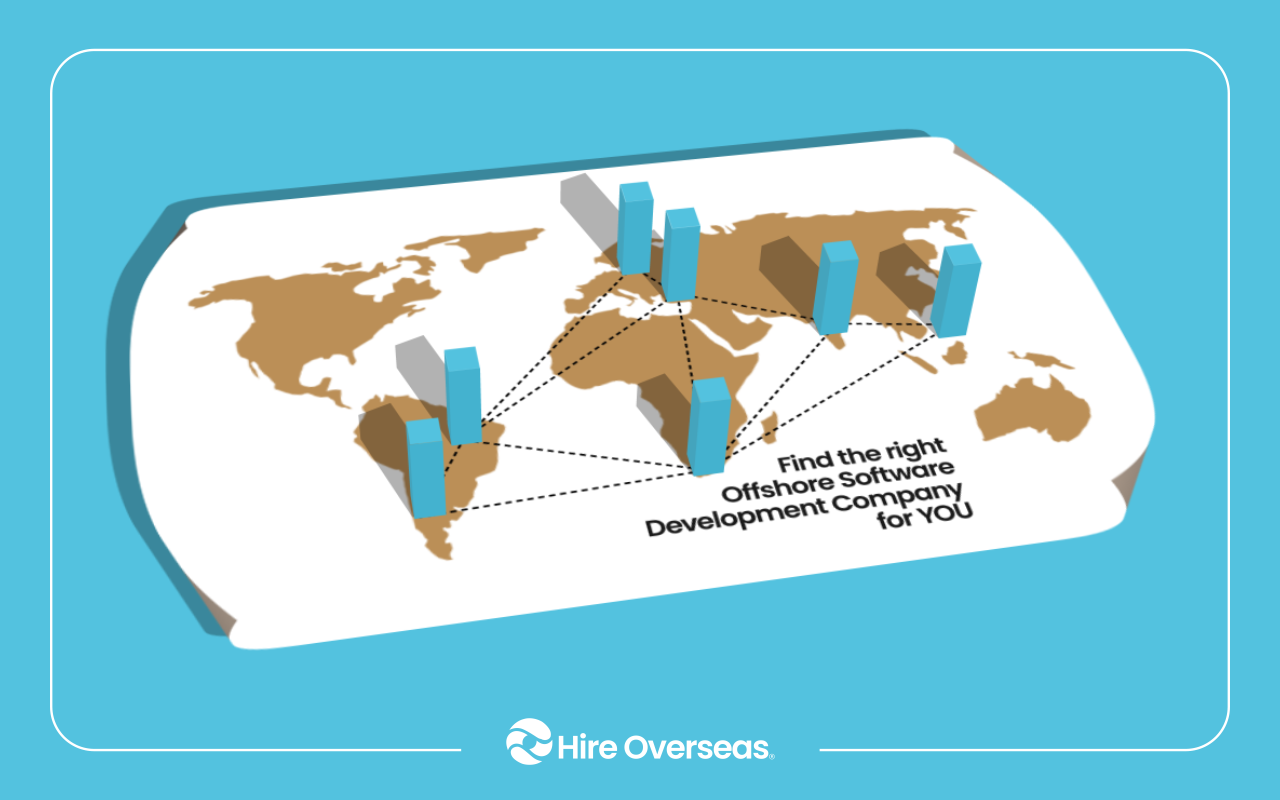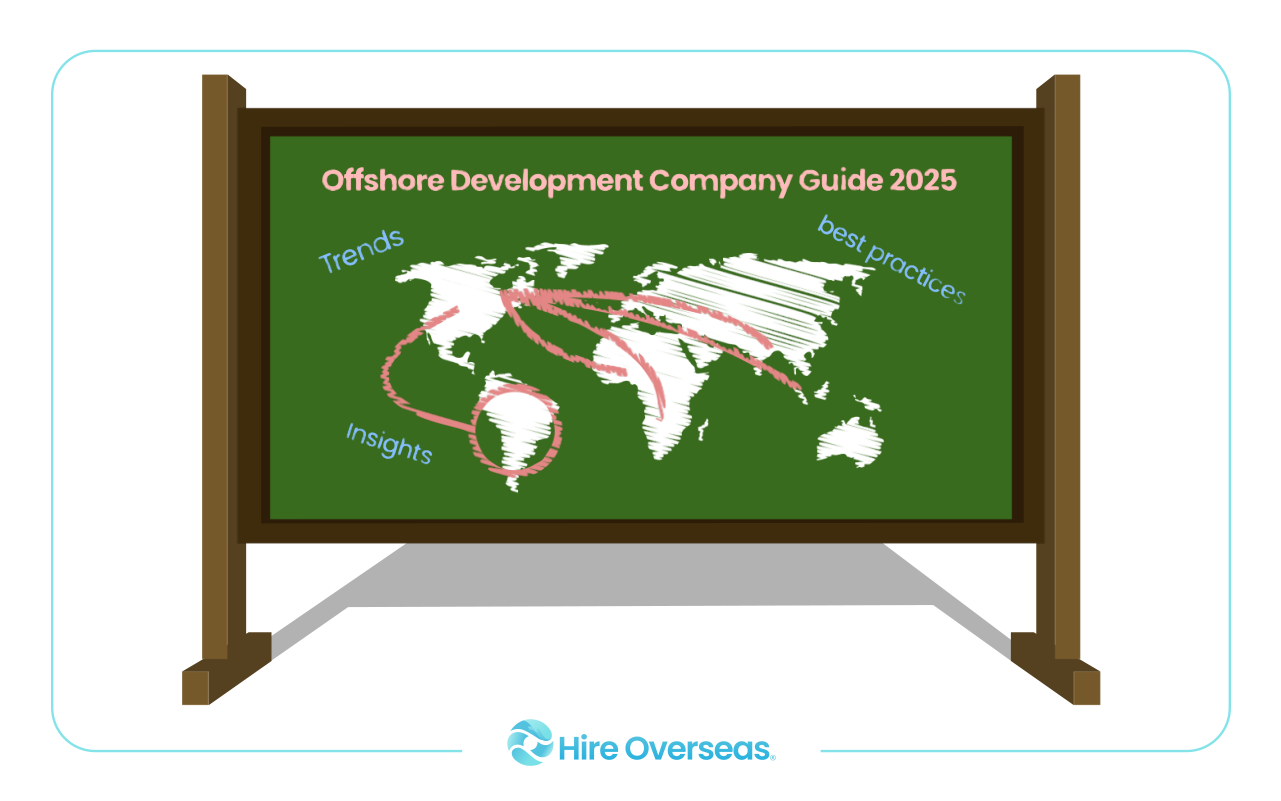Leveraging AI with Overseas Teams: Enhancing Workflow Through Automation

Remote teams once meant chaos: missed messages, endless emails, and time zone headaches. But in , AI turns that chaos into clockwork. No longer just a buzzword, AI quietly syncs calendars, suggests action items, drafts notes, and even nudges you to take breaks—keeping your team aligned and efficient.
With remote and hybrid work now the norm, speed and intelligent automation aren’t luxuries—they’re essential. This article cuts past theory to show how automation, especially when combined with global talent, streamlines workflows. Whether you’re collaborating with contractors in Cebu, a designer in Warsaw, or developers in Buenos Aires, AI empowers you to work smarter, faster, and saner. Let’s rethink how we work—starting now.
Rethinking Workflows: Why AI Is Perfect for Remote-First Teams
Remote Work Isn’t the Problem—Remote Workflows Are
Remote work isn’t the real challenge—it’s clunky workflows: disjointed handoffs, deadline confusion, endless doc versions, and the daily “Did anyone do that?” AI thrives here—not as a magic fix, but as a tireless assistant seamlessly stitching processes together.
The "AI + Overseas" Combo Is Weirdly Perfect
Distributed talent across time zones demands automation to do more than just function—to excel. With AI-powered project tools (think ClickUp, Notion), overdue tasks are flagged and reassigned instantly, no -hour lag. Meeting notes? AI summarizes and localizes them for every team member in real time. This isn’t about replacing people—it’s about killing friction.
Automation in Action: Key Use Cases for Distributed Teams
You’re in. But where does AI actually fit in your day-to-day? Here’s where automation hits the pain points—making work less annoying, more productive, and, honestly, way more satisfying.
Hiring: No More Guesswork, Just Great Matches

AI recruiting tools (HireVue, SeekOut, LinkedIn Recruiter) scan resumes, rank candidates, flag issues—basically a sleepless recruiter. But culture fit and commitment? That’s still on you. For global hiring, automation handles time zones, compliance, and language nuances. Know which levers to pull.
Onboarding: From "Where’s the Link?" to “I Got This”
Remote onboarding shouldn’t feel like a maze. Automation platforms (Talmundo, BambooHR) guide new hires through tools, processes, org charts, and check-ins—personalized, step-by-step. Toss in generative AI for client scenarios or product demos. Just don’t let it get too robotic: add videos, welcome calls, even a quirky quiz for the human touch.
Project Management: Because Missed Deadlines Are So 2022
Missed updates and deadline chaos? Modern tools (ClickUp, Asana, Monday.com) bring AI to auto-prioritize, predict timelines, and flag dependencies. Example: content gets finished in Manila, Berlin editor wakes up to an automated summary and suggested deadlines. Light tools (Notion AI, Slack GPT) keep everyone in the loop, delivering top updates instantly. But remember: messy data just creates faster messes.
Team Communication: Lost in Translation? Not Anymore

Distributed across five time zones? AI tools (Grammarly Business, DeepL, Microsoft Teams) make cross-lingual chats seamless—real-time translation, tone checks, clarity. Even set Slackbots for wins or birthdays; little touchpoints matter when you’re not at one lunch table.
Bottom Line? AI Helps You Run a Tighter Ship
Don’t automate everything—just enough to let your distributed team breathe. Smart hiring, onboarding, collaboration, and project tracking: faster, cleaner, and way less micro-managed—exactly the superpower you want across borders and time zones.
Scaling Sustainably with AI
Your overseas team’s clicking. Tasks move, meetings are smooth, and onboarding isn’t chaos. Then leadership: “We’re scaling. Fast.”
Growth isn’t just more people on Zoom—it’s more tools, workflows, and complexity. If unmanaged, momentum turns to mayhem. Enter AI: not a sideshow, but your new operations co-pilot.
Growth Isn’t Just Headcount—It’s Complexity
Scaling means more meetings, Slack threads, onboarding docs, messy spreadsheets, and confusion over ownership. With a global team, you can’t rely on ad hoc fixes—you need infrastructure. That’s automation. Effective scaling uses AI to reinforce, not overengineer. Thoughtfully layered, automation lets you scale without losing your mind.
AI as a Workflow Multiplier, Not a Band-Aid
Don’t wait for breakdowns. Layer in AI early:
- Spot team bandwidth issues before burnout.
- Auto-assign tasks based on past performance or timezone.
- Generate dashboards showing blockers, overdue tasks, and cross-team trends.
Don’t just hire to patch chaos, use AI to preempt it. Traditional growth adds more chefs; AI builds the smart kitchen.
Hiring at Scale Without Losing Your Culture
Rapid hiring risks culture loss. AI can help: automated candidate rankings, interview notes, and personality mapping accelerate smart, intentional recruitment—especially across borders.
Onboarding gets tailored by role, department, and even language. No more generic welcomes—just relevant info at the right time.
The Quiet Superpower: Forecasting the Future
AI isn’t just reactive—it anticipates problems before they happen. Tools like Tableau AI, Microsoft Fabric, and Google Analytics predict issues such as upcoming staffing shortages, slower project deliveries, or customer service backlogs.
For example, Tableau AI might alert you when your team’s response time is trending downward, signaling the need for additional support. Similarly, Microsoft Fabric could identify recurring bottlenecks in content production, helping you proactively allocate resources. These insights aren’t perfect, but they're actionable and provide valuable foresight for strategic decisions.
But Let’s Be Clear—AI Isn’t a Shortcut
AI accelerates scale, but exposes bad processes and can’t fix communication. Leadership and intentionality remain essential. No cheat codes, just smarter, saner growth.
The Human-AI Balance: Avoiding Over-Automation
AI is powerful, but automate too much and you lose more than control—you lose the human touch that makes a team real. Automate status updates, onboarding, and task juggling—but you can’t automate empathy or cultural intuition. AI should lift the load, not take the wheel.
Know When to Lean Back and Let Humans Drive
Ask “Should I automate this?” not just “Can I?” Efficiency tempts us to automate everything, but some issues—like a struggling teammate—need a real conversation, not an algorithm.
Quality Control Still Needs a Pulse
AI can draft a report in seconds. It can’t sense subtle client concerns, adjust tone, or read between the lines. Human QA matters—not just for accuracy, but for nuance and trust.
Don’t Let Culture Slip Through the Cracks
Beware of ultra-efficient, AI-heavy workflows: productivity can spike while connection flatlines. Don’t let automation erase your team’s emotional fabric. Check in personally. Celebrate wins together.
Let AI surface insights, but always answer with empathy. Even with remote teams and seamless processes, it’s culture that keeps people committed—not just efficiency.
Data Integrity: The Bedrock of AI Success
AI quality hinges on data—garbage in yields garbage out. Managing diverse countries, cultures, and workflows amplifies data risks. Clean, relevant, and well-contextualized data drives AI wins. Messy data leads to misguided automation: outdated tags, reused templates, and faulty recommendations. This erodes trust, causing teams to bypass systems, turning AI into an abandoned tool.
Key practices for trustworthy AI:
- Seamless data pipelines: prevent duplication, eliminate stale tags, enforce consistent naming.
- Cultural context: tailor prompts and labels to regional nuances—what’s urgent in Singapore differs from Spain.
- Regular human reviews: monthly validations, prompt feedback, retraining.
- Standardize inputs: unify measurement of performance and engagement across borders to avoid chaos and ensure meaningful learning.
Best Practices for AI-Enabled Overseas Teams
You’ve got the tools, the people, and the data. Now, how do you make it all work—without burning out your team or turning them into button-pushing zombies? Here’s the must-have playbook for every AI-forward manager:
Blend Machines With Real Leadership
AI can automate the grunt work, but it can’t replace authentic leadership. Let automation handle reminders and reports; you focus on clarity, direction, and connection. AI runs the factory; you run the vibe.
Start Small
Don’t automate everything at once. Tackle one bottleneck—weekly reports, meeting summaries, vacation approvals—then build from there. Let people adapt before expanding.
Train Your Team, Don’t Just Drop Tools On Them
Don’t just drop new tools and hope for the best. Hold walkthroughs, run mini-trainings, and share cheat sheets. Own the learning curve together—when your team understands the why, they’ll buy into the how.
Use AI to Coach, Not to Control
AI can spot trends and flag burnout risks, but it’s not for micromanaging. Use insights to start conversations—“I noticed your workload’s up; let’s rebalance”—and build trust through listening, not dashboards.
Let AI run in the background. You run the team.
Don’t chase every flashy tool as automation works quietly: calendars that reschedule, drafts that appear, and subtle alerts when someone needs a break. Prioritize building seamless systems. Train your people, not just your prompts. And above all, truly connect with your team.
AI will never know them like you do.
Unlock Global Talent with Ease
Hire Overseas streamlines your hiring process from start to finish, connecting you with top global talent.




